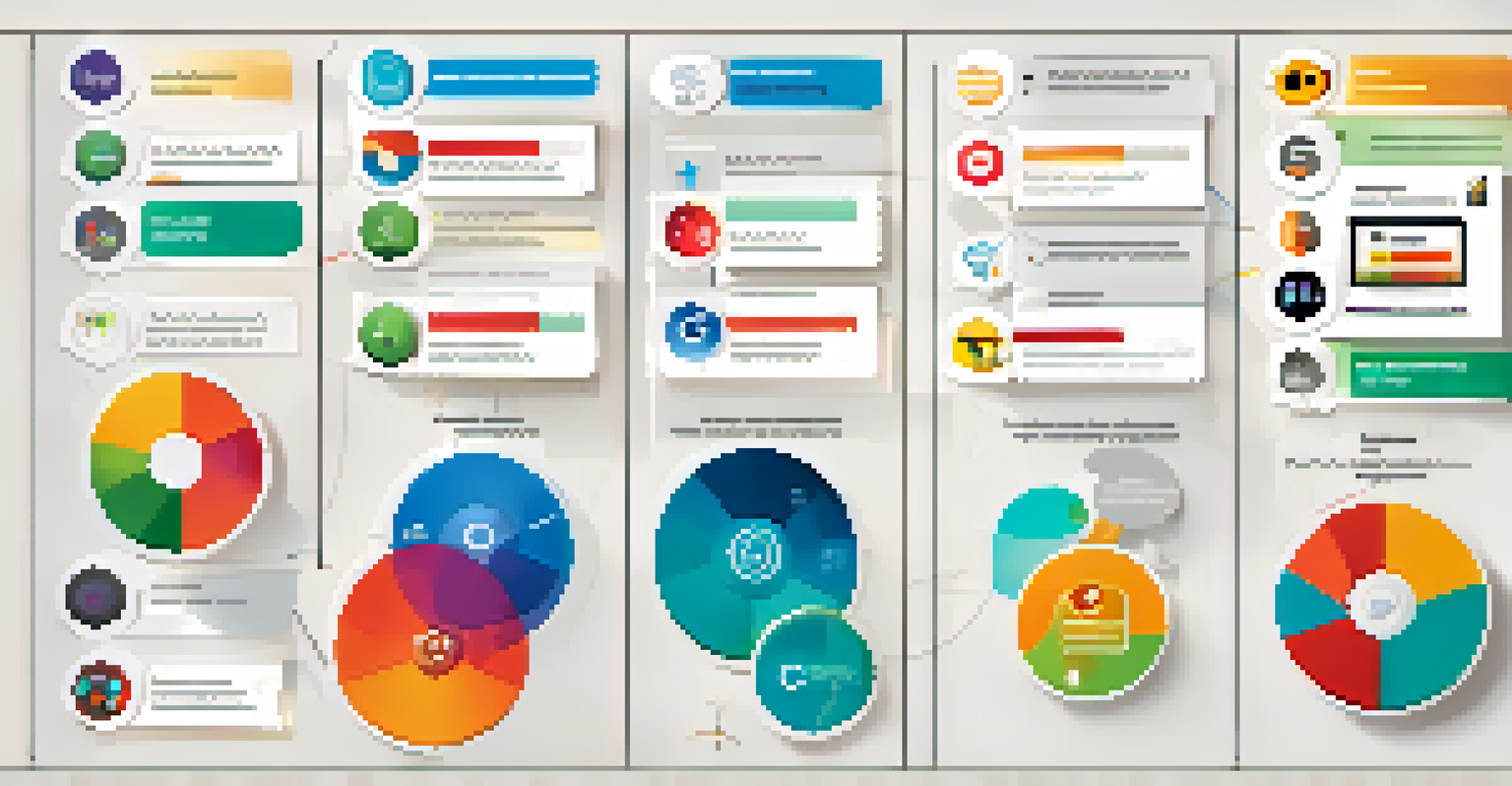The Importance of User Feedback in Product Development

Understanding User Feedback and Its Role
User feedback is the valuable information and insights provided by customers regarding their experiences with a product. This feedback can take many forms, such as surveys, reviews, or direct communication. Understanding user feedback is crucial because it helps businesses align their products with actual user needs and preferences.
Your most unhappy customers are your greatest source of learning.
When companies actively seek and analyze feedback, they gain a clearer picture of what works well and what doesn’t. For instance, a simple suggestion from a user can highlight a missing feature that could significantly improve the product. This process not only enhances the product but also fosters trust and loyalty among users.
In essence, user feedback acts as a compass for product development, guiding teams toward making informed decisions. Without it, businesses risk developing products that miss the mark, potentially leading to poor sales and customer dissatisfaction. Thus, embracing user feedback is essential for long-term success.
Types of User Feedback to Consider
User feedback comes in various forms, and each type offers unique insights. Qualitative feedback, such as open-ended survey responses, provides rich, detailed perspectives on user experiences. On the other hand, quantitative feedback, like ratings and metrics, offers measurable data that can be easily analyzed.

Another important type is usability testing, where real users interact with the product while observers note their behaviors and reactions. This method reveals not just what users think but also how they act, which can uncover usability issues that may not be apparent through surveys alone. Combining these different types of feedback creates a comprehensive understanding of user needs.
User Feedback Drives Product Success
Understanding and incorporating user feedback is essential for aligning products with customer needs and enhancing overall satisfaction.
Additionally, social media and online reviews serve as informal yet powerful sources of feedback. Users often share their thoughts spontaneously, providing a candid view of their experiences. This type of feedback can be a goldmine for understanding user sentiment and identifying areas for improvement.
The Feedback Loop: An Ongoing Process
The feedback loop refers to the continuous cycle of gathering, analyzing, and implementing user feedback in product development. It's not a one-time event but an ongoing process that should be integrated into the lifecycle of the product. This ensures that the product evolves in line with user expectations and market demands.
Feedback is the breakfast of champions.
Establishing a feedback loop allows teams to adapt quickly to changing user needs or preferences. For example, if users express frustration over a specific feature, the team can prioritize fixes in their next update. This responsiveness not only improves the product but also enhances user satisfaction and loyalty.
By treating user feedback as an integral part of product development, businesses can stay ahead of the curve. This proactive approach helps in identifying trends and anticipating user needs, ultimately leading to a more successful product and a stronger connection with customers.
Creating Effective Channels for Feedback
To harness the power of user feedback, businesses must create effective channels for collecting it. This can range from user-friendly surveys and feedback forms on websites to social media interactions and direct customer support communication. The key is to make it easy for users to share their thoughts and experiences.
Incorporating feedback mechanisms within the product itself can also encourage users to provide input. For instance, prompting users to rate their experience after using a feature or service can yield valuable insights. This kind of immediate feedback is often more candid and relevant.
Establish Continuous Feedback Loops
Creating a feedback loop allows businesses to adapt quickly to user preferences, ensuring products evolve in line with market demands.
Moreover, fostering a culture of open communication encourages users to voice their opinions. When customers feel valued and see that their feedback leads to real changes, they are more likely to engage and provide ongoing input. This strengthens the relationship between the brand and its users, creating a collaborative environment.
Prioritizing Feedback: What to Listen To
Not all feedback is created equal, and understanding which insights to prioritize can be challenging. It’s essential to look for patterns in feedback rather than focusing on isolated comments. For example, if multiple users mention a similar issue, that indicates a significant area needing attention.
Evaluating the source of feedback is also crucial. Feedback from loyal customers or frequent users often carries more weight than that from occasional users. This doesn’t mean dismissing others’ opinions, but prioritizing insights from those who use the product regularly can lead to more impactful changes.
Additionally, balancing quantitative data with qualitative insights helps in making informed decisions. For instance, if a feature has low ratings but users describe it positively in comments, it may indicate that users appreciate its potential but find it challenging to use. This nuanced understanding can guide targeted improvements.
Implementing Changes Based on Feedback
Collecting user feedback is just the first step; the real challenge lies in implementing changes based on that feedback. Once feedback is analyzed, teams must prioritize what changes to make and develop a clear action plan. This ensures that user insights translate into tangible improvements in the product.
For instance, if feedback indicates a feature is confusing, the development team might simplify the user interface or provide clearer instructions. Showing users that their input leads to real changes not only improves the product but also enhances user trust and loyalty.
Implement Changes for User Trust
Acting on user feedback and communicating changes fosters trust and loyalty, making customers feel valued and engaged.
Moreover, communicating back to users about the changes made based on their feedback can strengthen the relationship. Whether through newsletters, blog posts, or social media updates, keeping users informed demonstrates that their voices matter. This transparency fosters a sense of community and encourages further engagement.
The Long-Term Benefits of User Feedback
Investing in user feedback yields long-term benefits that go beyond immediate product improvements. By consistently engaging with users and adapting products to meet their needs, businesses can build a loyal customer base. Satisfied customers are more likely to become repeat buyers and recommend the product to others.
Moreover, user feedback can drive innovation. Understanding user pain points opens doors to new features or entirely new products that address unmet needs. This can give businesses a competitive edge and position them as leaders in their industry.

Ultimately, a commitment to user feedback creates a culture of continuous improvement. As businesses regularly incorporate feedback into their processes, they foster an environment where innovation thrives, leading to sustainable growth and success.